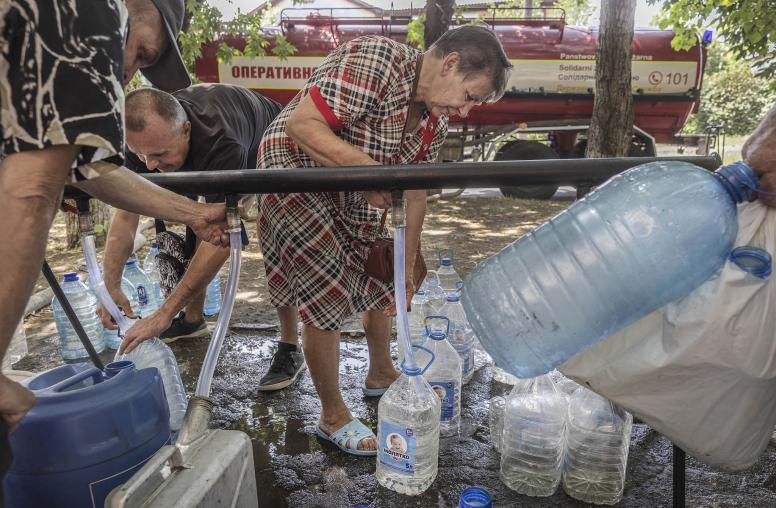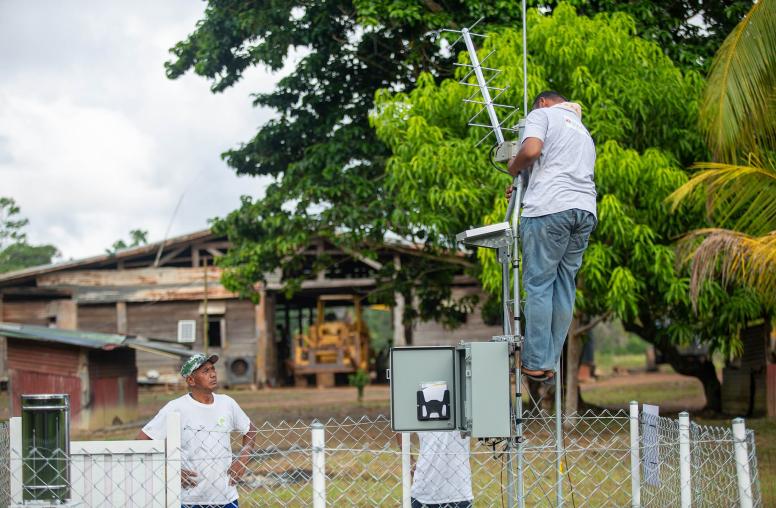The Outlook for COP28: Fighting, Fighting Everywhere, with Progress on the Line
The U.S. will need a new approach to navigating the concerns and interests of other countries.
The 2023 U.N. Climate Change Conference of Parties (COP28) risks becoming two December weeks of negotiations in Dubai rife with visible conflicts: With the chair of COP28 perceived by many as having conflicts of interest with the oil and gas industry, a newly released Global Stocktake report highlights how far global action is from achieving the goals of the Paris Agreement.

Meanwhile, a new agreement between China and the United States has relaunched bilateral cooperation on climate change but failed to deliver the ambitious example for which many other countries look. There are also significant details on the structure of a new Loss and Damage Fund still to be worked out, especially provision of funding. The summit will also feature a new day on the agenda focused on relief, recovery and peace, bringing attention to how little international funding is going to support climate adaptation in fragile and conflict-affected countries.
One of the overarching tensions that has existed within the U.N. Framework Convention on Climate Change (UNFCCC) negotiations is the different views of developed and developing countries around responsibility for and equitable responses to climate change, with rapidly developing countries such as China navigating a tense middle ground. This main disconnect and source of distrust between countries is likely to be further exacerbated by this year’s negotiations at COP28, with potential ramifications for U.S. relationships around the world.
The Global Stocktake
When the Paris Agreement on climate change was signed in 2015, it built in an assessment of progress every five years, starting with the 28th Conference of Parties of the UNFCCC. This Global Stocktake is expected to influence the next round of Nationally Determined Contributions — the commitment each country puts forward to reduce its greenhouse gas (GHG) emissions and increase its resiliency to climate impacts — which will be updated in 2025.
The key finding from the technical report of the Global Stocktake, released in September, is that the global community is far off from the Paris Agreement’s goal “to limit the [global average] temperature increase to 1.5°C above pre-industrial levels.” The report noted a rapidly narrowing window in which to minimize disruptive warming. It also highlights that the only way to achieve these goals is through systems change, which can be highly unsettling to society. While the COP process has focused strongly on commitments to GHG reductions and “zero-emissions” pledges, it has not addressed this risk of disruption as aggressively: A better discussion of how to develop feasible pathways to reduce GHG emissions while also minimizing the risk of conflict would be welcome progress.
The amount of subsidies and other financial incentives that support the oil and gas industry, the key source of GHG emissions, now tops $1 trillion. By comparison, the current estimate of finance needed to support adaptation efforts in developing countries is far less — and there are significant gaps in the actual provision of finance. Many countries with oil and gas are looking to benefit from those resources before the global economy shifts to greater reliance on more renewable forms of energy, creating perverse incentives — including for the United Arab Emirates (UAE), the host of COP28, whose chair has been accused of using his position to lobby for the UAE’s oil and gas industry. Discussion about realistic pathways for shifting labor toward renewable technologies; how to minimize geopolitical tensions around access to key minerals and to create a mining industry that prioritizes the needs of the communities likely to be impacted; viable economic and political pathways for fragile, oil-producing countries toward other industries; and many other challenges should be part of the discussions.
U.S.-China Cooperation on Climate
The rapprochement between the United States and China on climate change is a welcome development, especially in terms of its significance in reestablishing global leadership between the two biggest emitters of GHGs. Arriving in the shadow of Chinese leader Xi Jinping’s summer speech highlighting China’s determination to shape its own path and Xi’s unwillingness to meet directly with the U.S. special presidential envoy on climate change, John Kerry, the resulting statement this month on climate change yielded important advances, but also left critical gaps. Key among the advances is the commitment to a bilateral “Working Group on Enhancing Climate Action in the 2020s” and a commitment to curb all GHG emissions, including methane, a powerful GHG that was left out of China’s previous commitments. However, it also left many issues to be addressed at COP28 or beyond, including China’s continued investment in coal energy.
While China steps up its efforts to build climate-related partnerships on energy, it has failed to address pressure from developing countries to offer funding for adaptation efforts, an area in which the United States has provided both bilateral and multilateral finance but also failed to live up to expectations. Whether these disagreements will further shape diplomatic relationships between developing countries who want support on adapting to climate change and the United States and China remains to be seen, but both countries are likely to face increased pressure for action on reducing GHG emissions as well as supporting developing countries to address climate impacts.
Progress on the Loss and Damage Fund
Evidence of a funding gap for climate adaptation combined with the slow, painful progress on the development of the Loss and Damage Fund is likely to continue to exacerbate distrust between developed and developing countries. According to a recent U.N. report, up to $387 billion will be needed annually for climate adaptation in developing countries. Yet even a year after the declaration of the Loss and Damage Fund at COP27, questions linger as to fund governance and fund contributors.
The fund’s draft proposal, released this month, indicates that the power among the fund’s board is shifting ever so slightly in the direction of developing countries compared to former funds; 14 seats are reserved for developing countries while 12 are reserved for developed countries. However, a proposal for the World Bank to host the fund has again highlighted developed countries’ sway over how funds are used, in this case due to the United States’ influence on the World Bank.
While a tentative compromise seems to have been reached — World Bank management for an initial four years — it has left distrust which will further complicate difficult discussions around contributions by developed countries to the fund. Progress on finance for this fund is critical to developing countries, and yet it is unclear whether COP28 will be able to deliver.
A Day Focused on Peace
For the first time this year, peace will be explicitly featured on the COP agenda; the Relief, Recovery and Peace Day will take place on December 3. In under-resourced regions already at risk of conflict, communities must endure a disproportionate brunt of climate consequences — often facing higher levels of food and water insecurity, threatened livelihoods, displacement and increased violence. Over half of the countries that are most vulnerable to climate change are also impacted by conflict. A day focused on accelerating climate action in fragile and conflict-affected countries is a welcome advancement.
A central focus of the Relief, Recovery and Peace Day is the barriers that have historically prevented fragile and conflicted-affected states from accessing climate funds. In 2021, only $223 million went to the 10 most fragile states, accounting for less than 1 percent of climate finance. People living in extremely fragile states can receive up to 80 times less climate financing compared to those living in more stable states. Highlighting these barriers to finance with the goal of addressing them constructively and identifying approaches to better tackle the multifaceted risks of climate, conflict and fragility could be an enduring legacy from this COP.
Climate Negotiations as a Security Risk
COP28 arrives during a critical period of global conflict and insecurity. While this geopolitical context will shape COP negotiations this year, it is all too evident that the climate negotiations have deep impacts on the global security landscape, with risks for the United States. How the United States uses its influence and status as a developed country to shape the negotiations will impact its diplomatic relationships around the world — and affect how climate security challenges ranging from localized political instability to geopolitical tensions play out. With predictions that this COP may be the most contentious in years, it is clear that the United States must find new ways to navigate the different concerns and interests of countries participating in the negotiations, including its own.
Katherine Waters is a senior program assistant for the climate, environment and conflict team at USIP.



